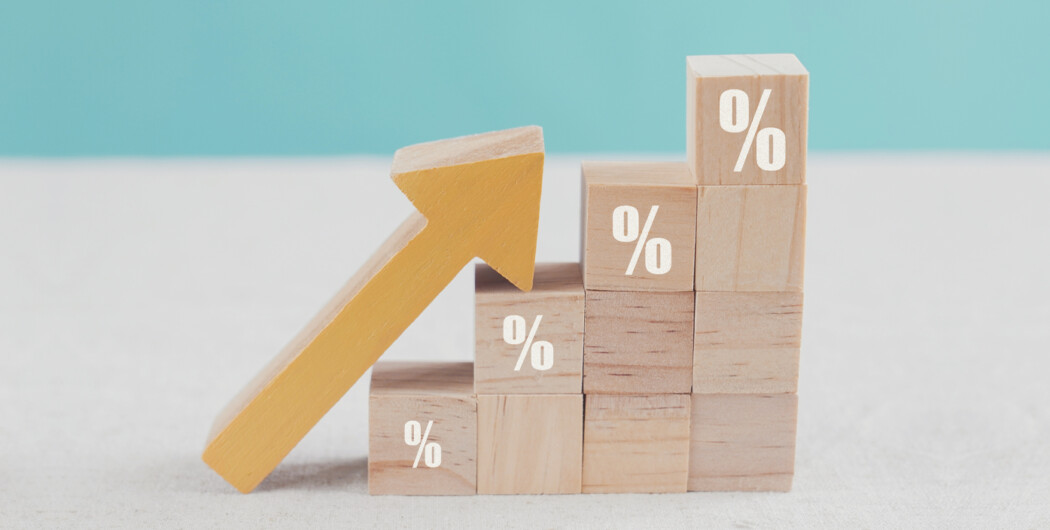

The very nature of markets is such that they fluctuate constantly. For investors, this makes it difficult to predict where to invest capital. While there is no way to know exactly how things will unfold, several reliable indicators can help you explore opportunities in the market.
The CAGR (full form: Compound Annual Growth Rate) is one of the measures commonly referred to while doing so. Let’s take a closer look at what it is.
What is the meaning of CAGR?
The Compound Annual Growth Rate (abbreviation: CAGR) is the rate of return that would (theoretically) be needed for an investment’s value to grow from its initial value to its ending value. This formula assumes that profits will be reinvested at the end of each time during the investment’s duration.
How to calculate the CAGR?
This formula will help you to calculate the compound annual growth rate quickly:
CAGR=[( EV/BV) 1/n – 1] x 100
Where:
BV = Beginning value
EV = Ending value
n = Number of years (or months)
Hence, to calculate the CAGR of investment:
- Divide the final value of the investment at the end of the period by its initial value at the start of that period.
- Raise the resulting number to an exponent of one divided by the number of years (or months).
- Minus one from the result.
- Finally, multiply by 100 to get your CAGR as a percentage.
Note! CAGR is one of the most accurate ways to calculate and determine the return on anything that can rise or fall in value over time.
What can the CAGR tell investors?
Investors do not use the CAGR as a return rate but as a symbolic representation. By definition, CAGR is a number that describes the theoretical average rate at which an investment would have grown, assuming it had grown at a uniform rate every year with the profits being reinvested at the end of each year.
However, this sort of performance is rare as market performance faces continuous rises and falls. The CAGR is useful as it smooths returns to a single number that can be understood much more easily than pondering over each year’s return.

Example of how to use the CAGR
Understanding how to calculate the CAGR in a normal calculator using the formula and its importance can be quite confusing, so we’ll be using an example investment to help all of it make sense.
Imagine you’ve invested a sum of $10,000 in an investment portfolio, and your yearly returns were as follows:
- From 2018 to 2019, your portfolio’s value grew to $13,000 (an annual profit of 30% in 2018).
- In 2020, the portfolio was valued at $14,000 (an annual profit of 7.69% in 2019).
- By 2021, the portfolio ended up with a value of $19,000 (a growth of 35.71% from last year).
The annual growth rates vary significantly, as is expected from the market.
On the other hand, let’s plug in the values in the Compound Annual Growth Rate calculator:
CAGR = [ ( $19000 / $10000) 1/3 – 1 ] x 100 = 23.86%
The CAGR of 23.86% simply negates the fact that the performance of the investment varied greatly in-between years. Cutting this extra detail can help you, as an investor, compare alternatives for your capital by forecasting future values.
In any single year during an extended period, the performance of investments will differ. One may rise in value while the other falls. This difference is especially seen when comparing stocks to high-yield bonds or a long-term real estate investment to emerging markets. Now that you know how to calculate the CAGR, you can use it to get an average of the annual return over the entire period, making the two alternatives much simpler to compare.
Additional CAGR uses
As we saw in our example, calculating the CAGR can help smoothen an investment’s year-to-year growth, which will likely appear erratic and uneven due to market volatility. An investment might increase in value by 8% in one year, drop in value by -2% the following year, and again increase in value by 5% the following year. The CAGR will help smooth the annual growth rates, which are expected to be volatile and inconsistent.
Comparing investments
The CAGR can help differentiate between different types of investments. An investor who places $10,000 into a savings account with a fixed annual interest rate of 1% for five years and another $10,000 into a stock mutual fund can’t compare the raw annual growth of the two. The rate of return on the stock will be uneven over the same number of years.
That’s where CAGR comes in. Let’s say that at the end of the five years, the account’s balance got to $10,510.10, and the ending balance of the stock fund was $15,348.52. Using the CAGR, an investor can compare the two investments and understand the difference in returns:
Saving Account CAGR = [ ( 10510.10 / 10000) 1/5 – 1] x 100 = 1.00%
Stock CAGR = [ ( 15348.52 / 10000 ) 1/5 – 1] x 100 = 8.95%
The CAGR shows that the stock fund is clearly the better investment, with almost nine times the return of the savings account. However, what it doesn’t show is the investment’s volatility and risk, which is a major drawback of the CAGR.
Track performance
Aside from a simple side-by-side comparison, the CAGR can also be used to compare the performance of several business measures of multiple companies alongside one another.
Detect weaknesses and strengths
The Big Store has a market share CAGR of 1.82% over a five-year period, but the CAGR of its customer satisfaction over the same period was -0.58%. This comparison of the CAGRs of different measures within a company brings to light its specific strengths and weaknesses that can be improved.
How do investors use the CAGR?
Understanding the calculation of CAGR is an excellent introduction to several other ways that investors can evaluate past returns and estimate future profits. The formula can be used strategically to find the current or future value of money or to calculate the required rate of return.
Example
Assume that an investor knows that they need a sum of $50,000 for their child’s college education by the end of the next 18 years, and they have $15,000 on hand to invest today. What is the average rate of return required for the investor to be able to reach that objective?
Anyone can use the Compound Annual Growth Rate (CAGR) calculator to answer this question as follows:
Required CAGR = [ ( 50000 / 15000 ) 1/18 – 1] x 100 = 6.90%
This is done by simply repurposing the CAGR formula and changing the present value and final value in the equation.
Modifying the CAGR formula
There is no rule mandating that purchasing investments are to be done on the first day of the year while they are to be sold on the last day of the year! As such, this is quite rare. Let’s assume an investor wants to evaluate the CAGR of an investment that was purchased for $10,000 on June 9, 2013, and then sold for $16,897.14 on Sept. 18, 2018.
For investments made for irregular times, the investor must work out the fractional remainder of the holding period before the CAGR calculation can be performed. In this case, the position was held for 213 out of 365 days in 2013, for the full years of 2014, 2015, 2016, and 2017, and 251 out of 365 days in 2018. Therefore, the investor held the investment for a total of 5.271 years.
The following calculations show how:
- 2013 = 213 days
- 2014 = 365 days
- 2015 = 365 days
- 2016 = 365 days
- 2017 = 365 days
- 2018 = 251 days
This gives us a total day count of 1924 days. The investment was thus held for 1,924 days. Simply divide this total number of days by 365 (1,924/365) to calculate the number of years for which the investment was held, and this will be equal to 5,271 years, as mentioned above.
Place the calculated number of years that the investment was held into the denominator of the exponent of the CAGR formula as follows:
CAGR = [ ( $16,897.14 / $10,000 ) 1/1.271 – 1] x 100 = 10.46%
Smooth rate of growth limitation
The major functional limitation of the CAGR is that by calculating a smoothened growth rate over some time, it simply fails to consider the investment’s volatility. It implies that the value growth of the investment during the entire timeframe was steady. It is quite unrealistic as returns on investments are typically uneven over time.
The CAGR also does not take into account the funds added or withdrawn by an investor into their portfolio over the timeframe for which the returns are being calculated.
If an example investor had a portfolio for five years and periodically added funds into the portfolio during this time period, then the calculated CAGR would be artificially inflated as it would wrongly calculate the rate of return based completely on the initial and final balances over the five years. It would essentially consider the added funds as a part of the annual growth rate, which would be inaccurate.
Other CAGR limitations
The CAGR does have other limitations apart from the smoothed rate of growth.
Its second one is that investors cannot assume that the calculated rate will continue to be the same in the future. When assessing an investment, it is essential to think about future growth rather than past growth because how steady a company or investment has performed and grown in the past is no surety that it will do so similarly in the coming years.
Additionally, the shorter the time frame considered in the analysis, the less likely it will be that the future CAGR will be similar to the CAGR calculated based on historical results.
The third limitation of the CAGR is its limitation of representation. For example, with an investment fund worth $100,000 in 2015, $81,000 in 2016, $71,000 in 2017, $44,000 in 2018, and $126,000 in 2019, if the fund managers advertised in 2020 that their past CAGR has been a whopping 42.01% over the last three years, technically they would be correct. However, they would be omitting the details about the fund’s year-by-year history, such as the fact that the fund’s CAGR for the last five years was a mere 4.73%.
CAGR vs. IRR
Similar to how the CAGR measures the average annual return on an investment over a given period, the IRR, or internal rate of return, is another measure used to represent investment performance more flexibly than the CAGR. The major distinction between the two is that it’s simple to learn how to calculate the compound annual growth rate using a normal calculator that you would probably have at hand.
In contrast, other more complicated investments and projects, or ones that have several different sources of cash influx and outflux, are better evaluated by using the IRR. To calculate the IRR, it is best to use a financial calculator, MS Excel, or a professional portfolio accounting system.
What is an example of the CAGR?
In short, the CAGR is a measurement used by investors to convey the average rate at which an investment’s value grew over time. The “compound” in the name denotes the fact that it accounts for the compounding effect as well.
For example, let’s say you have a company with revenue that rose from $1 million to $10 million over the last ten years. In such a scenario, the CAGR would be roughly 25.89%.
What is considered a good CAGR?
The context is important when labeling what a good CAGR is. However, investors will evaluate a CAGR by considering its opportunity cost and the risk associated with the investment.
For example, if a company grew by roughly 25% in an industry with an average CAGR closer to 30%, then its CAGR might not seem good in comparison. But if the industry average is lower, such as 15%, then the CAGR of the same company will be considered very impressive.
In general, a higher CAGR indicates better performance.
What is the difference between the standard growth rate and CAGR?
The difference between an investment’s CAGR and its growth rate is that the CAGR considers the growth rate was compounded each year, while a standard growth rate does not. It is why investors prefer the CAGR over year-by-year growth rates, which can be quite cumbersome to go over.
For example, even a successfully profitable company will likely experience several years of poor performance at some point while doing business. These bad years have a relatively small impact on the CAGR of the company.
Can the CAGR be negative?
Yes. A negative CAGR indicates losses over the timeframe rather than profits.
What is the risk-adjusted CAGR?
Investors use a risk-adjusted CAGR to compare the performance and risk of various investment options. The simplest method for calculating a risk-adjusted CAGR is to calculate the normal CAGR and multiply it by one minus the investment’s standard deviation. If the standard deviation (i.e., its risk) is zero, the risk-adjusted CAGR is unaffected. A larger standard deviation, on the other hand, will lower the risk-adjusted CAGR.
The bottom line
So, CAGR evaluates all kinds of industries and anything of value. Along with annual usage, the CAGR calculator can also be helpful for monthly investments: in evaluating past performances and comparing how they stand up to each other.
Ensuring you fully understand how the CAGR is calculated and how it can be used can help you make informed decisions to help you towards your goals.









